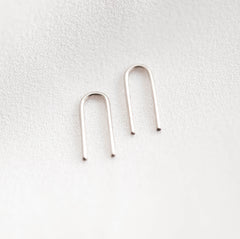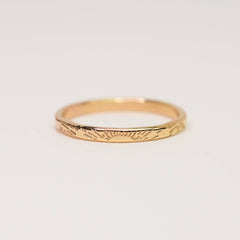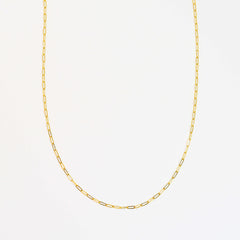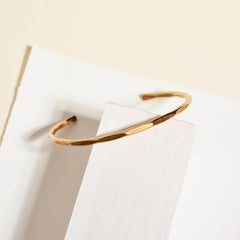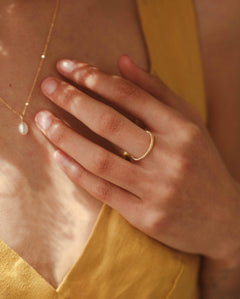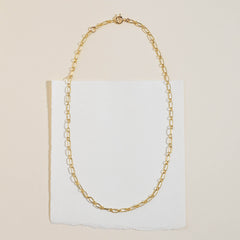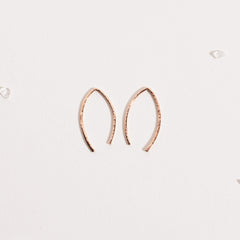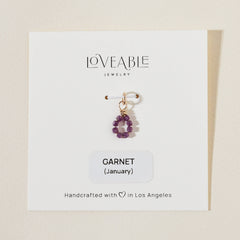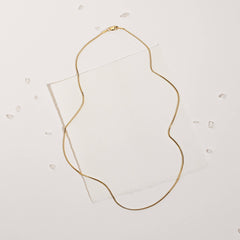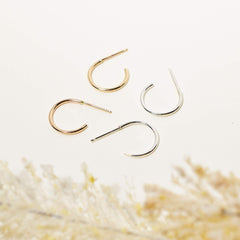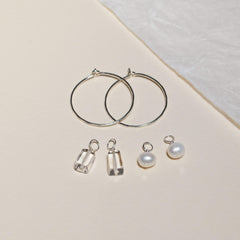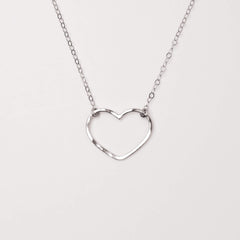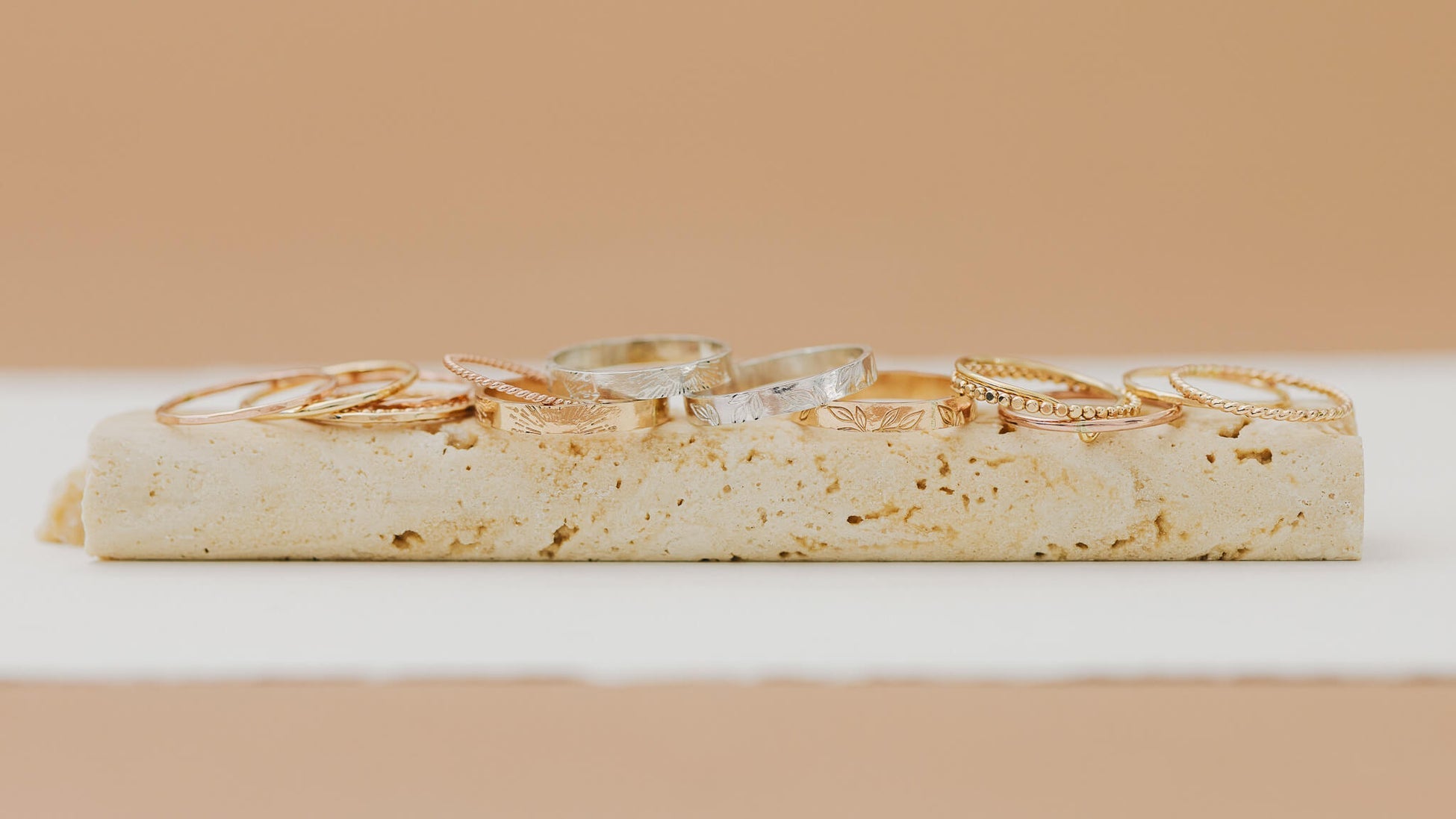Jewelry Care
Tips on how to care for your Loveable jewelry:
1. Shower in it. Clean water is great for giving your Loveable jewelry a gentle wash. Just avoid harsh soaps.
2. To remain gunk free, put on your SPF, lotions, or perfumes before you put on your jewelry.
3. We recommend taking off your jewelry for excessive pool and hot tub use. Chemicals can take a toll on your pieces over time.
4. Every once in a while give your jewelry a deep cleaning. Using a gentle soap or baking soda and soak your piece for a few minutes. A toothbrush can gently remove dirt in tight spaces. Dry thoroughly. For extra shine, buff with your polishing cloth.
5. Wearing your sterling silver is the best way to keep it clean (your skin’s oils are the trick), but when you’re not, store it in a small zip-lock baggy or sealed container to help reduce oxidation and tarnish.
How to care for Sterling Silver jewelry
1. Storing your sterling silver in an air-tight container is going to go a long way to keep the air dry and the piece tarnish-free.
2. Oils from your skin help prevent silver from tarnishing, so the more you wear it, the more the oils can help keep it shiny new.
☞ If the oxidized look is not for you…
3. Use a polishing cloth (you might have received one with your order!) It’s perfect for buffing out that everyday tarnish you see.
4. If your piece is heavily tarnished, try lining a pan with aluminum foil, and soaking the piece in a bath of 1 tsp salt and 2 tsp baking soda. Wait up to five minutes. The aluminum, salt and soda work together to make the piece tarnish-free.
What causes Sterling Silver to tarnish
It may seem strange, but even the air works to tarnish your sterling silver. The moisture in the air that makes a summer hot and humid also works to tarnish that silver.
The air around us also contains elements like sulfur that can accelerate tarnish on silver. Digging in sulfur-rich dirt, using care products with sulfur (shampoos, cleansers, etc.) or even exposing your jewelry to foods with sulfur (watch out chopping onions!) can lead to that darkening you dread.
The acidity on your own skin can affect your silver. Some people find sterling silver tarnishes faster on them than it might on someone else. That also might mean something as simple as not wrapping it in certain tissues or papers that are acidic
So the bad news? Sterling silver can tarnish . . . by literally existing in our air, or on our bodies. But the much better news? We’ve got lots of ways to minimize or prevent tarnish before it starts, and polish it up even if it’s already there.
FAQ about how our jewelry is made
What is 14k gold filled jewelry?
A thick layer of solid 14kt gold that is heat and pressure bonded to a center core of high quality jeweler’s brass. With proper care, 14kt gold fill will last just as long as solid 14kt gold. Gold-filled pieces are hypoallergenic and waterproof. Pure gold doesn’t tarnish, so the thick layer of 14kt gold on gold-filled pieces prevents tarnishing.
How do you solder or join 14k gold filled jewelry?
Without getting to geeky in jewelry talk, we solder gold filled jewelry with 14k yellow gold solder. Since 14/20 gold fill is a clad metal as shown above, It’s a delicate process to properly solder gold filled jewelry without exposing the fine brass core. The area where a piece is soldered or joined can't be sanded down or buffed the way a solid metal can (i.e. sterling, solid gold) so you'll notice a join mark a little more with gold filled jewelry. Gold filled jewelry cannot be “cast” like other solid metals like sterling silver or solid gold so in order to make our unique designs they are done by hand and fused or soldered together using fine 14k yellow gold solder among other special jewelers tools.
How do you solder 14k rose gold filled pieces?
14kt rose gold filled can be a tricky metal to solder because of it’s rose/copper hue. There is no such thing as solid rose gold solder so you have to use gold solder instead. By using a lower karat gold (we use 10k yellow gold solder) it has a slight silver hue and more closely matches the color of rose gold rather than the more yellow 14k yellow gold solder. So again if you look closely you can find the 10kt gold solder point on rose gold as a slight silver tone.
All of these details are what make handmade so unique and give more meaning to your special piece 💗
I see a slight variation or two-tone in color on my gold filled or rose gold filled piece. Is that normal?
Yes that is normal. We use 14k yellow gold solder to solder (fuse together) our gold filled jewelry. Since gold fill is 14/20 (solid gold to jeweler’s brass) it will have a slightly different hue from the 14k yellow gold solder. You might see a slight color variation between those two metals in your piece. That is totally normal and with a quick cleaning or polishing of the metal that variation will be practically unnoticeable. Read our cleaning tips below.
Because our jewelry pieces are truly handmade we are working from scratch to build each design.
The only way to ensure there is no tonal difference with soldered gold filled jewelry is to gold plate the entire piece when it is complete. This is an in-depth and costly process that we choose not to take on so we can continue to offer affordable prices for high quality pieces.
How do you solder sterling silver jewelry?
Sterling silver is the easiest to solder as .925 sterling is a solid metal and we use the same .925 sterling silver solder to bind it together. It's rare that you will notice where the solder join is unless your silver piece has tarnised, as silver can do. But don't fret, sterlling silver can always be polished or buffed right back to it's original shine.
About our semi-precious gemstones
We use a variety of high quality gemstones in our designs. We gravitate towards spakly stones that have beautiful meanings.
All of our gemstones are extremely high quality natural stones that are ethically sourced.
Click here to read our gemstone guide to learn more about the about the magical meanings behind the stones.

